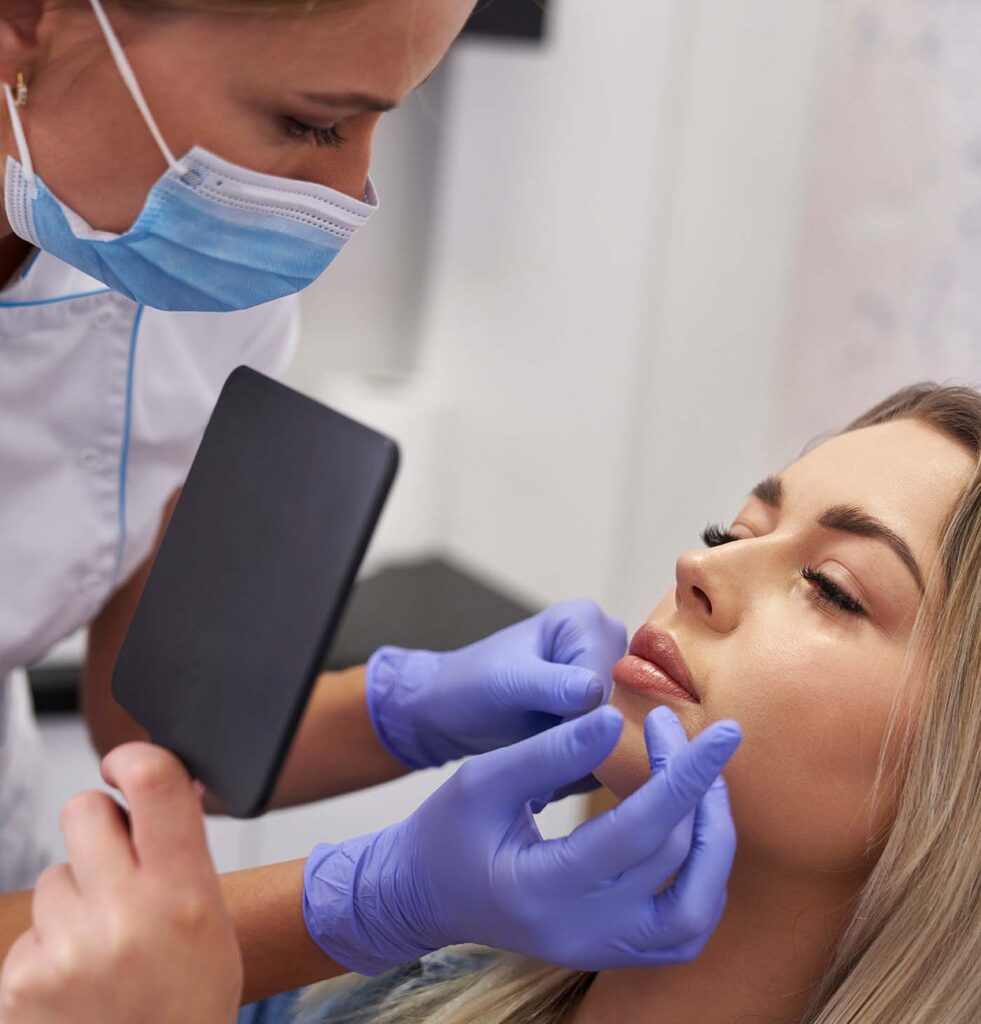
Filler Migration: Causes, Prevention, and What to Do If It Happens

Dermal fillers have revolutionized cosmetic treatments, offering a minimally invasive way to enhance facial features, smooth fine lines, and restore youthful volume. While fillers are generally safe and effective, one potential concern is filler migration, a condition where the filler moves away from its intended placement. Though uncommon, it can lead to an uneven or unnatural appearance, leaving patients wondering what went wrong. By understanding what causes filler migration, how to prevent it, and what to do if it occurs, you can make informed choices to maintain the natural, beautiful results you desire.
What Is Filler Migration?
Filler migration occurs when the injected material shifts from its original placement, often moving to surrounding areas. This condition can cause visible lumps, uneven contours, or an overly “full” appearance in unintended locations, such as just above the lips or below the eyes. While this phenomenon can be unsettling, it is not always a sign of a poorly performed procedure. Facial anatomy, filler type, and natural movement can all contribute to migration. Common areas where this occurs include the lips, where the thin skin and frequent motion can exacerbate the issue, and the under-eye area, where fillers may migrate downward if improperly placed or overfilled.
What Causes Filler Migration?
Filler migration can happen for several reasons, ranging from technical issues during the procedure to natural bodily processes. Key contributors include:
- Overfilling: Injecting excessive amounts of filler in a single session can put pressure on surrounding tissues, increasing the likelihood of displacement.
- Incorrect Placement: Poor technique, such as injecting filler too close to the skin’s surface or in a high-movement area, can cause the product to shift over time.
- Facial Movements and Anatomy: Everyday activities like talking, chewing, and smiling can cause fillers to move, especially in areas with frequent motion.
- External Pressure or Trauma: Applying pressure to the treated area too soon after the procedure—such as sleeping face down or massaging the area—can lead to migration.
- Specific Mechanisms: Filler migration may also occur through pressure-induced displacement, lymphatic spread, or, in rare
Trusted Source A Case of the Migration of Hyaluronic Acid Filler from Nose to Forehead Occurring as Two Sequential Soft Lumps. Ann Dermatol Chae SY, Lee KC, Jang YH, Lee SJ, Kim DW, Lee WJ Go to Source cases , intravascular injection.
Understanding these factors is crucial in preventing migration and maintaining natural, long-lasting results.
How to Prevent Filler Migration
While filler migration is rare, it can often be prevented by taking the right precautions before, during, and after treatment. Here’s how to reduce the risk:
- Choose a Skilled Injector: The expertise of your provider matters. A well-trained injector will understand facial anatomy, proper injection techniques, and how to achieve natural results without overfilling.
- Start with Smaller Amounts: Overfilling is a common cause of migration. Opting for smaller amounts of filler over multiple sessions ensures gradual, balanced enhancements.
- Select the Right Filler: Different types of fillers are better suited for specific areas of the face. Your provider can recommend the most appropriate option based on your needs.
- Follow Aftercare Instructions: Avoid touching or applying pressure to the treated area for at least 24–48 hours. Refrain from vigorous exercise and sleeping face-down immediately after your procedure.
- Monitor Results with Follow-Ups: Regular checkups with your injector can ensure the filler is settling properly and provide an opportunity for adjustments if needed.
By taking these steps, you can significantly reduce the risk of filler migration and enjoy natural-looking results that last.
What to Do If You Suspect Filler Migration
If you notice unusual lumps, unevenness, or swelling that lasts longer than expected, it’s essential to address the issue promptly. Here’s what to do if you suspect filler migration:
- Consult Your Provider: The first step is scheduling a follow-up appointment with your injector. They will assess the area and determine whether migration has occurred.
- Hyaluronidase Treatment: For hyaluronic acid fillers, hyaluronidase is an enzyme that can dissolve the product. This treatment can help restore a natural look, but results may take time to become noticeable or may not resolve
Trusted Source Filler Migration. When Is It Time To Start Fresh? American Academy of Facial Aesthetics Go to Source completely .
- Revision Treatments: In some cases, additional filler may be needed to correct asymmetry or restore balance. This should only be done once the migrated filler has been dissolved or settled.
It’s important to remain patient during the correction process, as restoring a natural appearance may require multiple steps and sufficient healing time.
Putting Your Best Face Forward
Filler migration is a rare but manageable concern that can be addressed with proper knowledge and expert care. By understanding the causes, taking preventative measures, and seeking timely solutions, you can achieve the natural, rejuvenated appearance you desire. Whether you’re new to fillers or looking to correct a previous treatment, choosing the right provider makes all the difference.
At True Blue Aesthetics in Edmond, OK, our experienced team is dedicated to helping you look and feel your best. Contact us today to schedule a consultation and learn more about our personalized approach to dermal fillers.
Sources
1 Chae SY, Lee KC, Jang YH, Lee SJ, Kim DW, Lee WJ. A Case of the Migration of Hyaluronic Acid Filler from Nose to Forehead Occurring as Two Sequential Soft Lumps. Ann Dermatol. 2016 Oct;28(5):645-647. doi: 10.5021/ad.2016.28.5.645. Epub 2016 Sep 30. PMID: 27746650; PMCID: PMC5064200. Available: https://pmc.ncbi.nlm.nih.gov/articles/PMC5064200. Accessed January 22, 2025.
2 American Academy of Facial Aesthetics. Filler Migration. When Is It Time To Start Fresh? Available: https://www.facialesthetics.org/filler-migration-when-is-it-time-to-start-fresh/. Accessed January 22, 2025.


